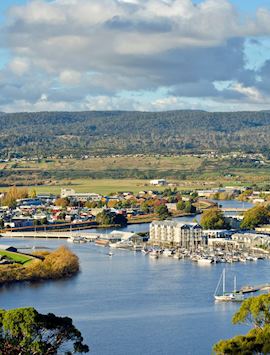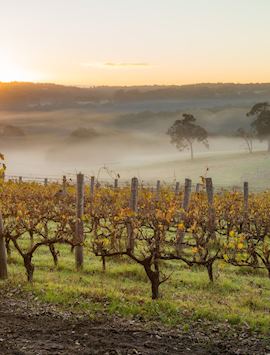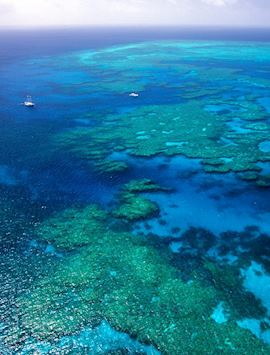From cliff-top coastal treks to walks through moss-adorned forests, Tasmania holds an incredibly diverse offering of hiking trails. In fact, out of all the multi-day walks that comprise the Great Walks of Australia, nearly half are found in Tasmania. Compared to the immense size of the Australian mainland, that’s quite a high ratio for the island state. And there are another 334 smaller islands found off the coast of Tasmania, some of which have notable walks of their own. Whether it’s a multi-day sojourn or a shorter path that’s family friendly and wheelchair accessible, here’s a look at the ten best hiking trails in Tasmania to discover on your visit to this wild island.
1. Bay of Fires trek
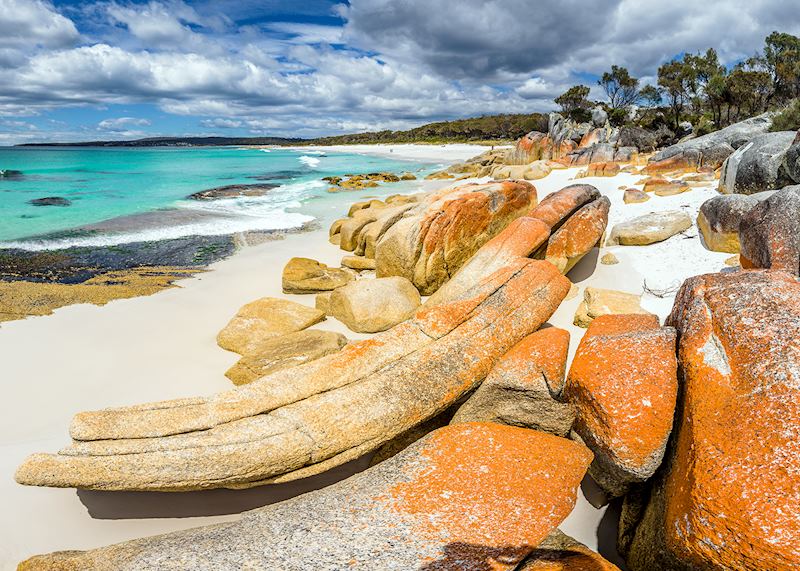
Found on the northeastern tip of Tasmania, the Bay of Fires trek will take you walking along high cliffs, over soft sandy beaches, and through dense bush trails. Extending from Binalong Bay to Eddystone Point, the Bay of Fires coastline stretches 50 km (31 miles). Shining blue seas meet distinctly orange boulders on shore, which is given a fiery hue thanks to lichen.
Accessed via Launceston, you can embark on a multi-day trek along this varied coastline, sojourning a distance of 33 km (20.5 miles) by foot for a duration of four days and three nights. During this moderate-grade walk, you can amble across sand dunes and enjoy a picnic lunch in a sheltered cove. You’d also have the chance to take to the water by kayaking down the Ansons River or go birdwatching in Ansons Bay.
2. Bruny Island

A 30-minute ferry ride from Kettering, just outside the capital of Hobart, Bruny Island is defined by a mix of dry rainforests brimming with fragrant eucalyptus, long sweeps of sandy beaches, lush pasture lands, and craggy cliffs. Look out for Australian fur seals sunning themselves on rocks along the coast, as well as little penguins making landfall on the beach, and dolphins happily cavorting offshore. In the right season (May to July and September to December), you might get a chance to see migrating humpback or southern right whales passing by.
The cherry on top of a day spent on Bruny Island’s walking trails — which range from easy 5-km (3.1-mile) tracks to challenging 17.6-km (10.9-mile) circuits — is the culinary delights you can enjoy at the end of your walk in this foodie haven. Slurp down fresh oysters, sample artisan cheeses, taste local fennel honey, and wash it all down with a tipple at Bruny Island House of Whisky or a glass of Tasmanian wine.
3. Cataract Gorge in Launceston
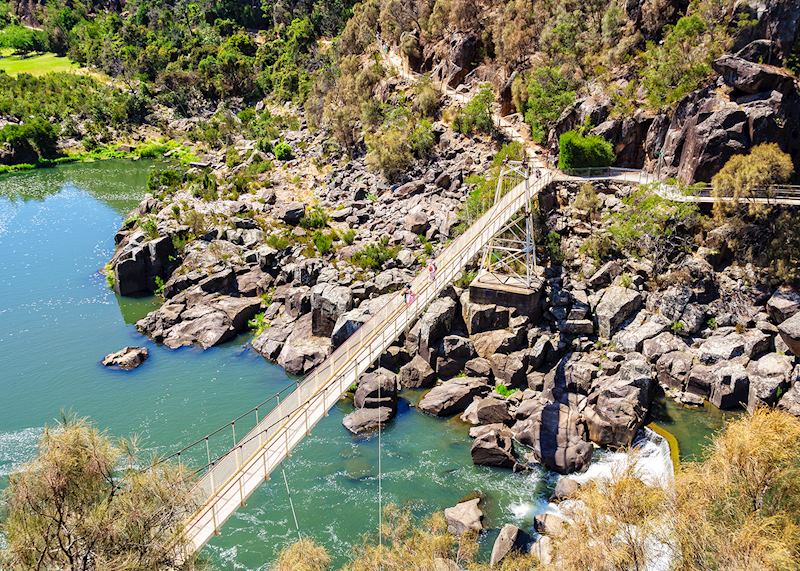
A short walk from the quaint riverfront town of Launceston, you’ll find the deep cleft in the earth that is Cataract Gorge. A rushing river runs through the steep valley of the gorge, which is adorned by forests that cascade down from cliff tops above. It’s a remarkable stretch of wilderness, found only steps from the city.
Myriad walking trails run through the forests and grasslands that surround Cataract Gorge. Some are short, like the 1.8-km (1.1-mile) return trip First Basin Loop. But the slightly longer and moderately challenging Duck Reach Trail will take you to some of the sights that the gorge is known for. This 4-km (2.5-mile) return track leads to a historic power station turned museum and a wiry suspension bridge that hovers over the river.
4. Freycinet Walk and Wineglass Bay
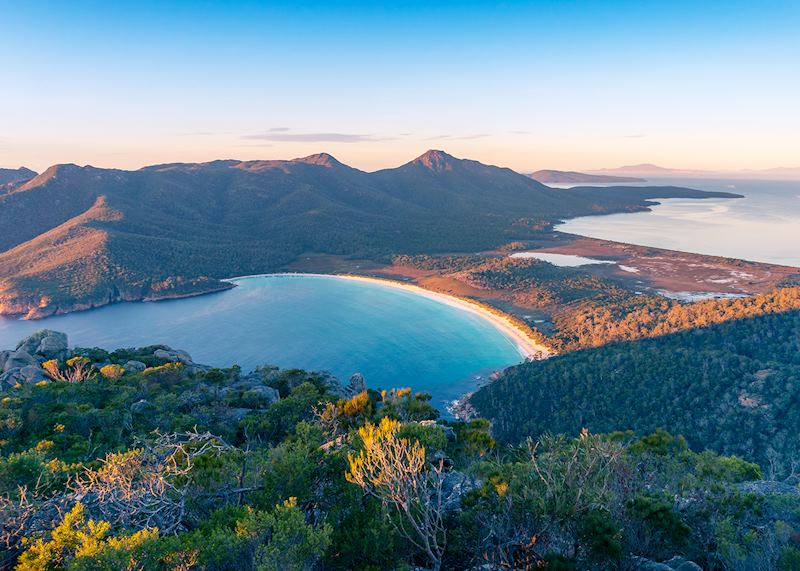
From the state capital of Hobart, it’s an easy trip to Freycinet National Park on the east coast. You can take a four-day hike dubbed the Freycinet Experience Walk. This 37-km (23-mile) hike leads you across the Freycinet Peninsula, traipsing past rose-hued granites of the Hazard Mountains before descending to coastal woodlands and pristine stretches of beaches, including Wineglass Bay.
The lofty lookout point above Wineglass Bay shows the curved shape of the beach below framed by a narrow flute of hills. This view, some say, does indeed make it look like a wineglass. But the truth is, this name comes from the heyday of the whaling industry that was once big in Tasmania. If you prefer a shorter walk to this scenic overlook, you can hike to Wineglass Bay in about two hours up a short but fairly steep track.
5. Cradle Mountain
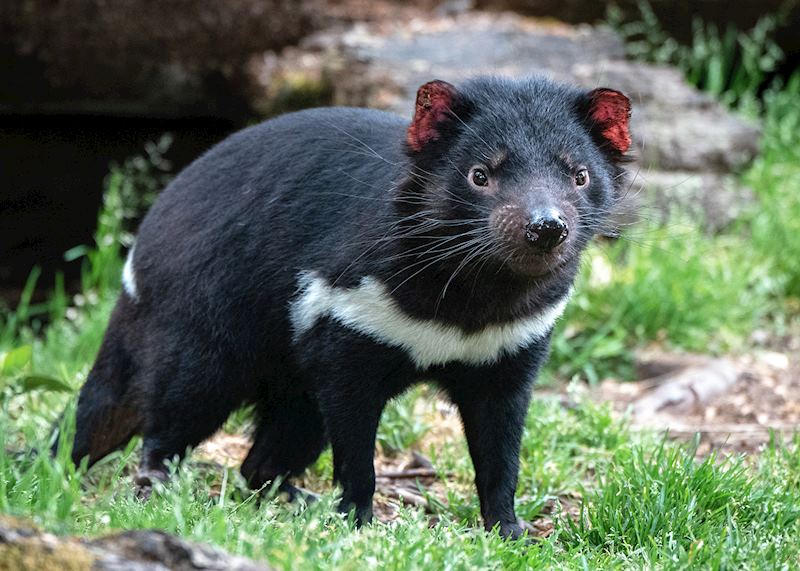
Heading inland to Cradle Mountain – Lake St Clair National Park reveals a different side of Tasmania. Here in the Central Highlands of the island, eucalyptus forests open up to rambling grasslands, glacial lakes, and spiky mountains on the horizon. Wildlife is abundant, and it’s not unusual to see a sleepy wombat shuffling over a walking path on your way down to breakfast at Peppers Cradle Mountain Lodge. Beyond the wallabies and Tasmanian scrubwren that you might see in the wild out on a walk, there’s also a sure chance to get up-close to Tasmanian devils at a designated sanctuary that sits at the base of Cradle Mountain.
The hikes here span from shorter loop trails to multi-day treks. Starting at the glacier-carved Dove Lake and leading through bush comprised of myrtle and King Billy pine, the 6-km (3.7-mile) Dove Lake Circuit is a good introduction to the park. Or for a higher vantage point of the surrounds, you can summit Cradle Mountain, a rough and steep trail that’s advised for only experienced bushwalkers. Meanwhile, the six-day Overland Track gives you unfettered access to this expanse of the UNESCO World Heritage Wilderness area.
6. Maria Island walk
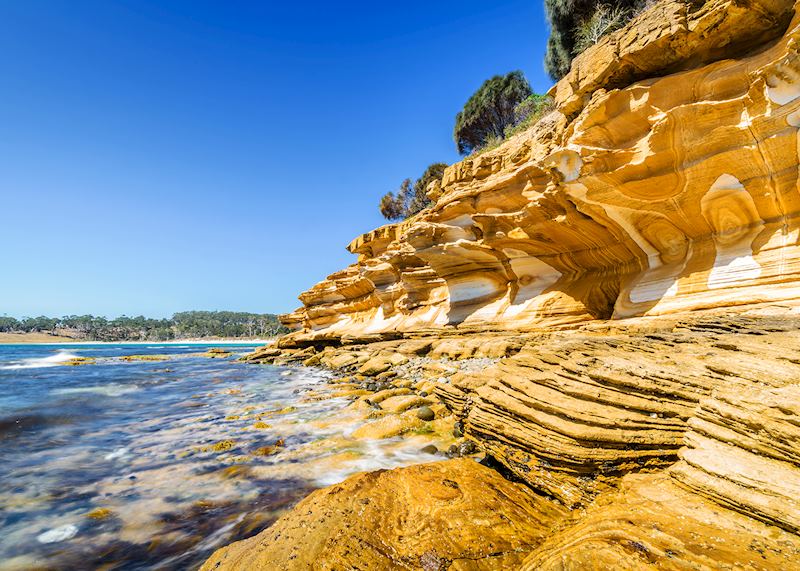
Offshore of Tasmania’s east coast, just a 45-minute ferry ride from Triabunna, is Maria Island National Park. Here you can walk beneath fossilised cliffs, scale lofty peaks, and see animals endemic to Australia, from Forester kangaroos to Tasmanian devils. With no cars on the island nature reserve, the ideal, and indeed only, mode of transport is on your own two feet making it an ideal place for some of the best hikes in Tasmania.
Maria Island can be explored in a three- to four-day hike on easy to moderate trails making it quite accessible. As you walk along the island's wide crescent beaches, look out for dolphins cavorting off the coast, and maybe finish the day with a refreshing dip in the sea.
7. Montezuma Falls
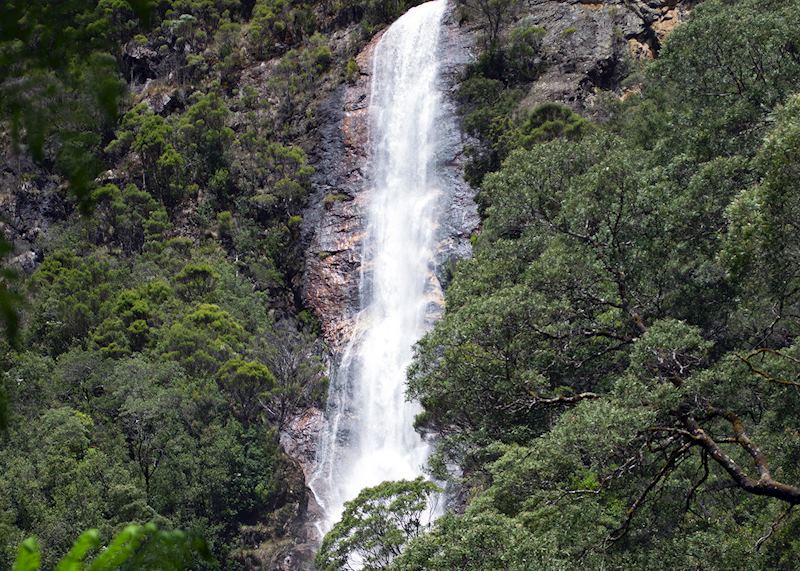
An excellent stop-over on the journey between Strahan to Cradle Mountain is this walk to Montezuma Falls. The remnants of an old tramway track lead up through dewy rainforest to the base of a powerful waterfall befitting of its Aztec emperor namesake. Thundering down from a lofty 104-m (341.2-ft) cliff, Montezuma Falls is Tasmania’s largest single-drop waterfall. Set on the western coast, the waterfall is a bit removed from the typical Tasmania travel routes but worth the visit.
The relatively flat ground and gradual incline of walking trail make it an easy hike for most ages. An 11.5-km (7.1-mile) return path, it takes you about three hours to get there and back. The shady path is bordered by giant tree ferns and ancient leatherwood plants, which bloom into white flowers that release a yellow nectar known for producing strong-tasting Tasmanian leatherwood honey. Once you arrive at Montezuma Falls, you can admire the flowing water from a suspension bridge that straddles the waterfall or by wandering down to the base of the falls itself.
8. Needwonnee Aboriginal Walk, Melaleuca
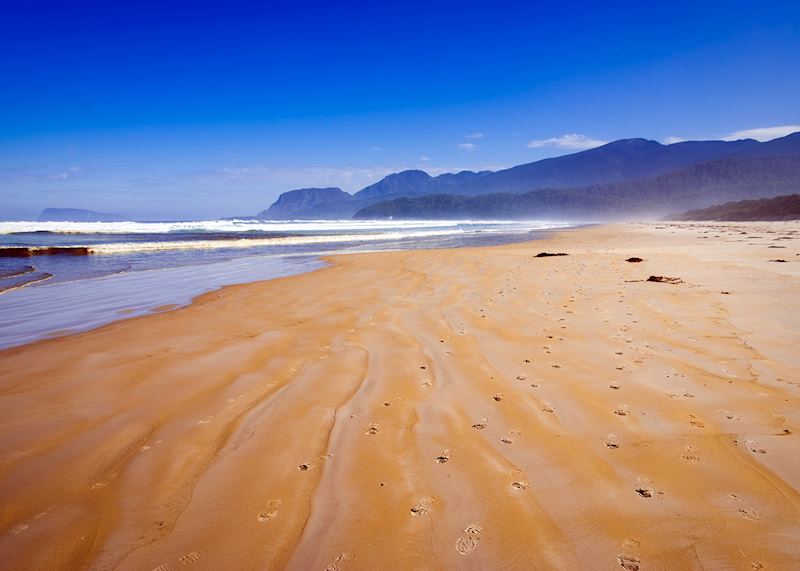
Bordered by wild rivers and mountain peaks, the Southwest National Park represents true wilderness that’s not easily reached. Your Audley Australia specialist can arrange a day tour by plane to this remote region, soaring over rivers, mountains, and a coastline battered by the Southern Ocean that separates Tasmania from Antarctica. Winging down into the tiny settlement of Melaleuca, which can only be reached by plane, boat or on foot, as part of a multi-day South Coast Track or Port Dave Track.
Arriving by plane, you’ll have the chance to immerse yourself in Aboriginal culture on the Needwonnee Walk. This short 1.2-km (0.75-mile) boardwalk path is lined by ever-changing sculptural installations. These living sculptures are made from natural materials and each tells a story about the Needwonnee people who lived in southern Tasmania for thousands of years before being displaced by European settlers.
9. Russel Falls in Mount Field National Park
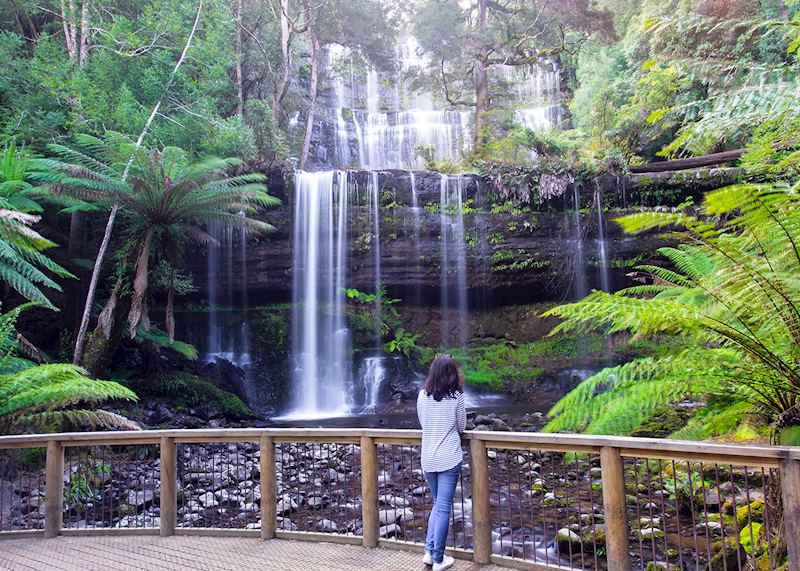
There’s absolutely no bushwalking required for the path that leads to Russell Falls in Mount Field National Park. Water runs down the multi-level falls, descending into a pool framed by mossy green forest. The entire 1.4-km (0.86-mile) return trail takes about 25 minutes roundtrip, giving you plenty of time to rest at the foot of the falls basking in the stillness of the forest. This easily accessible trail is flat with no steps or steep sections, making it suitable for wheelchair users and families with young children. An optional loop trail back might afford visitors a glimpse of an elusive platypus in the creek on the loop trail return.
Along the way, you’ll walk beneath smooth-barked swamp gums, the tallest flowering plants on Earth, growing alongside musk and myrtle. It’s easy to imagine that the glowworms that show themselves in the vegetation when the sun sets here are really fairies flitting among this densely magical forest.
10. Three Capes Track
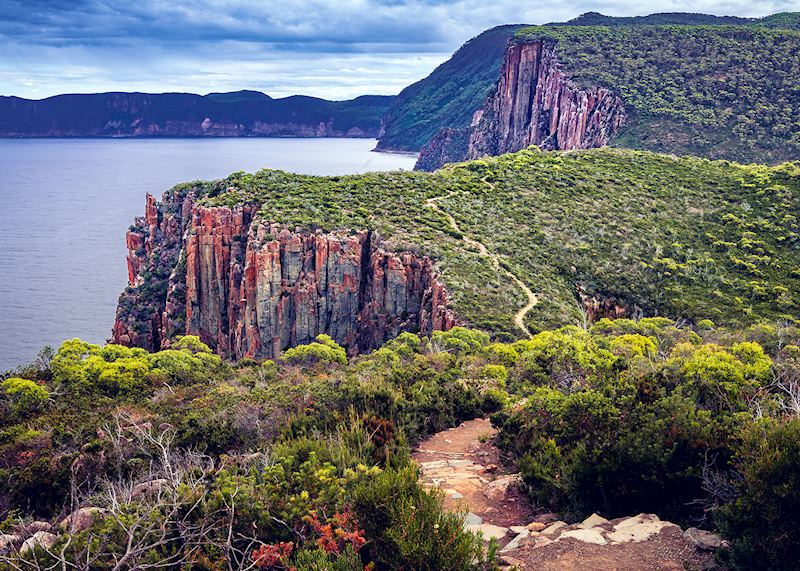
This four-day trek begins after checking in at the Port Arthur Historic Site on Tasmania’s southeast coast. Unlike the convicts who were once held in this penal settlement, you’ll be free to leave, boarding a boat that takes you to the trailhead at Denmans Cove. With a trail wide enough for two people to walk side by side, the moderately challenging 48-km (29.8-mile) trail was designed to be accessible for a wide range of hiking abilities.
Traipsing over Cape Pillar on the Tasman Peninsula, you’ll be surrounded by water with the sea crashing into coastal headlands and cliffs, known to be the tallest in Tasmania. High cliffs and raging seas below have earned Cape Pillar the nicknames of Desolation Gully and Hurricane Heath. Jutting out from the tip of the cape is a headland aptly dubbed The Blade that offers unrestricted views to little Tasman island, with a thriving fur seal colony, and the deep blue of the Southern Ocean beyond.
Read more about trips to Tasmania
Start thinking about your experience. These itineraries are simply suggestions for how you could enjoy some of the same experiences as our specialists. They're just for inspiration, because your trip will be created around your particular tastes.
View All Tours in Australia

